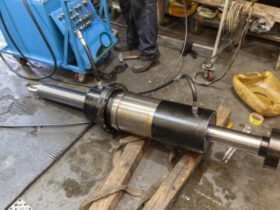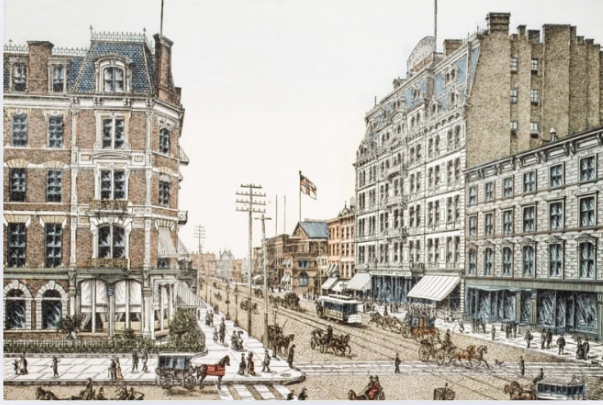Introduction
The Cotton Belt in the 1800s, with its lush farmlands and booming agricultural economy, was a region shaped by the labor-intensive cultivation of cotton. But what many may not realize is that this area also witnessed the birth and growth of a unique chapter in American medical history: the rise of doctor schools. These institutions were instrumental in training the next generation of physicians who would go on to serve rural and urban populations, often in conditions that were far from ideal. This blog post takes a deep dive into the development of doctor schools in the Cotton Belt, their curriculum, and their impact on both healthcare and society during the 19th century.
The Birth of Medical Education in the Cotton Belt
The Cotton Belt, stretching from Virginia down to Texas, was not a region traditionally known for advanced medical institutions. At the time, medical care was largely based on home remedies, herbal medicine, and a patchwork of healers with varying degrees of formal training. However, as the population grew and cities like New Orleans, Memphis, and Atlanta became hubs of commerce, the need for trained medical professionals became more apparent.
Medical Practices in the Cotton Belt
In the early 1800s, the South faced a host of medical challenges. Infectious diseases like malaria, yellow fever, and cholera were rampant, and there were few established medical practices to address these issues. Physicians were often seen as a last resort for the rural poor, and most people relied on local healers or folk remedies. However, with the expansion of population centers, the demand for more formal medical training and practices grew steadily.
See Also Read: Try Nerve Savior for 180 Days: A Complete Guide
The Role of Traditional Healers
Before medical schools were established, the region depended heavily on traditional healers. These individuals often learned their craft through apprenticeships or family traditions and used a variety of natural remedies. While not formally trained, many traditional healers were highly respected in their communities for their knowledge of herbal medicine and folk treatments. Their influence helped bridge the gap between medical education and everyday healthcare in the Cotton Belt.
Formation of Doctor Schools
As the demand for more formalized medical training grew, the first medical schools began to form in the South. These institutions were typically established in larger urban centers, where there was access to more resources and a growing middle class that could afford medical care. Over time, these schools laid the foundation for modern medical institutions in the region.
The Rise of Local Medical Institutions
By the mid-1800s, several medical schools were established in the Cotton Belt. One of the most notable examples was the Medical College of Georgia, founded in 1828 in Augusta. This school became one of the leading institutions in the South for medical education. Other schools, like the Tulane University School of Medicine in New Orleans, followed suit, providing much-needed training for doctors across the region.
Key Figures in Medical Education
Several individuals played pivotal roles in the creation and development of these early medical schools. Dr. Samuel Stout, for example, was instrumental in establishing the Medical College of Georgia, while Dr. Paul Tulane’s philanthropy helped fund Tulane University’s medical school. These figures not only contributed their expertise but also helped secure funding and legitimacy for medical education in the South.
Curriculum and Training
Doctor schools in the Cotton Belt were focused on providing practical, hands-on experience to their students. While the formal curriculum often mirrored that of Northern schools, the unique medical needs of the region shaped the way in which training was conducted.
Emphasis on Practical Experience
Medical students in the Cotton Belt often had to contend with a lack of formal hospitals, so much of their training came from observing and assisting practicing doctors in local communities. This meant that students gained experience in real-world settings, often learning how to treat diseases that were unique to the South, like malaria and yellow fever.
Medical Techniques and Treatments Taught
At the time, medical education was heavily focused on understanding human anatomy, surgical procedures, and the basics of diagnosing common illnesses. However, the region’s unique health challenges meant that Southern doctor schools also placed a significant emphasis on treating tropical diseases, understanding the environmental factors that contributed to widespread illness, and learning effective treatments for the most common ailments of the time.
The Impact of Medical Schools on Southern Society
The establishment of medical schools in the Cotton Belt had far-reaching effects on Southern society. Not only did these institutions train doctors who could help combat the region’s medical challenges, but they also fostered the development of a medical infrastructure that would serve the South for generations.
The Expansion of Healthcare Access
By training more doctors and providing them with the skills necessary to treat diseases specific to the region, these schools expanded healthcare access across the South. Before medical schools were established, many rural areas were underserved, with communities relying on traveling doctors or local healers. Medical schools helped to standardize healthcare delivery and ensure that more people had access to trained professionals.
Legacy of 19th Century Doctor Schools
The medical schools of the Cotton Belt played a crucial role in the development of the modern medical field. They not only trained physicians but also fostered a culture of research and clinical practice that would evolve into the sophisticated healthcare systems we see today. The legacy of these institutions can still be seen in the prominent medical schools in the South, like Tulane University and the University of Alabama at Birmingham, which continue to influence medical education globally.
Challenges Faced by Doctor Schools in the Cotton Belt
While these medical schools were instrumental in shaping the healthcare system of the South, they also faced numerous challenges. From financial difficulties to infrastructural limitations, the early years of medical education in the Cotton Belt were not without their struggles.
Financial Struggles
Funding was a constant issue for many medical schools in the region. Without the large endowments that many Northern schools enjoyed, Southern medical institutions often had to rely on private donations, tuition fees, and state funding, which were not always reliable or sufficient to cover operational costs.
Limited Resources and Infrastructure
Due to the rural nature of much of the Cotton Belt, many medical schools were built in locations with limited resources. This posed a challenge for both students and faculty, as access to textbooks, medical instruments, and research materials was often limited. However, despite these challenges, many schools managed to thrive and continue their educational mission.
Conclusion
The doctor schools of the Cotton Belt were more than just institutions of medical education—they were crucial in shaping the healthcare infrastructure of the region and providing the tools needed to address the unique medical challenges of the time. While they faced many challenges, their contributions to Southern society were immense, leaving behind a lasting legacy that continues to influence modern medical education and practice today.










Leave a Reply